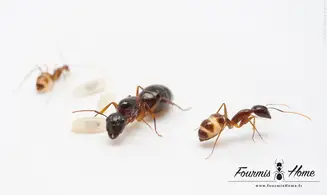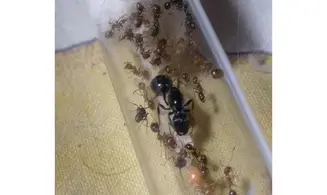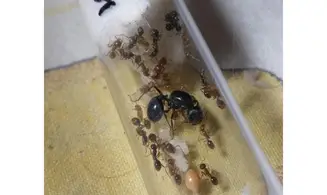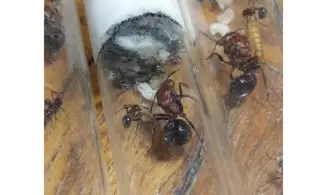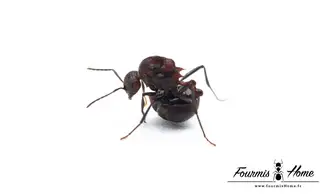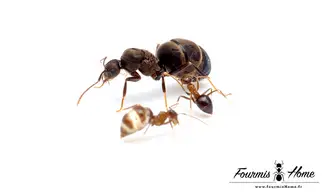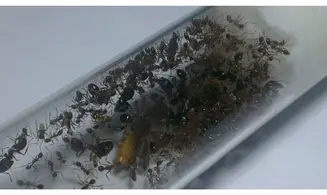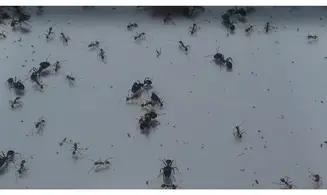Latin name: Pheidole noda
Taxonomy: Subfamily: Myrmicinae Tribes: Pheidolini
Breeding level: Intermediate
Geographical distribution: Japan, Vietnam, Java, India, Sri Lanka, China
Habitat: Open spaces, forests and forest edges
Colony shape: Polygynes
Queen: Size: 8 - 9mm Color: Head and black gastre, reddish brown thorax
Workers: Size: 4 - 6mm Color: Head and black gastre, reddish brown thorax
Soldier: 7-8mm Color: Head and black gastre, reddish brown thorax
Male: Size: 5mm Color: Black
Food: Mainly insectivorous, such as mealworms, flies, mosquitoes, crickets, etc. Honeydew and some seeds from time to time.
Humidity: Hunting area: 60 - 70% Nest: 60 - 80%
Temperature: Hunting area: 24 - 30 ° C Nest: 24 - 28 ° C
Hibernation: No but a winter break from early December to early March at room temperature is advisable
Nest type: Plexiglas nest, nest with tubes, reconstituted stone nest.
Description: Pheidole noda is a very aggressive species, they attack all the other insects around the colony and fight other colonies around the idea of their big soldiers, the life expectancy of the workers are only a few months So you have to feed them with insects to have a big brood to replace the natural ones. They are deemed to be the queens of escape, a totally closed hunting area is mandatory.
Development: Swarming from late May to August.
Foundation: Set in a cloister (without food) Development: 30 days from egg to worker (depending on temperature)
Size of the colony: Up to 20,000 individuals, the queen can reach the age of 12 years.





